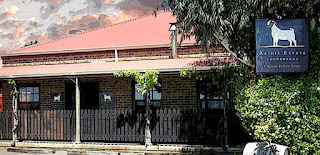The quiet Broke-Fordwich region of the Hunter Valley will once again take on an Italian accent during April.
Now in its eleventh year, the A Little Bit of Italy in Broke festival will once again transform the Broke-Fordwich area into a little slice of Italy Down Under from April 8-10.
The event will celebrate all things Italian to the backdrop of the tranquil Hunter landscape.
The festival originating as an intimate Italian dinner in 2005, which was hosted by a local winery. It has boomed since and now encompasses 12 venues, providing plenty of opportunities to indulge in wood-fired pizza, antipasti, and Italian cheese.
But visitors are advised to make sure to leave room for gelato and espresso.
The weekend will showcase a line-up of fresh produce and local wine, along with masterclasses and demonstrations hosted by the growers, makers and owners of the venues. All events will have an Italian twist.
Visitors are invited to relax amongst the post-vintage grape vines and olive groves while sipping on traditional Hunter Valley varietals, or to expanding their palates by sampling the many Italian varietals grown in the area.
Visitors simply pick up an event wine glass ($10) at their first stop – and can also collect passport stamps as they wander through the wineries to enter the prize draw to win a Luxury Broke Fordwich Mid-Week Escape for Two.
There will also be a “Hop on, Hop off” shuttle bus available each day.
To bring out your inner Italian try one of the many workshops on offer and learn how to make authentic gnocchi, olive oil pizza Nduja Sausage.
Other highlights will include market stalls, live music, a giant Jenga game and bocce!
The local winemaking community will be hosting a Village Dinner with an Italian flavour on
April 9 at Catherine Vale Wines, where guests will mingle with the local growers and enjoy an Italian menu designed by The Cellar Restaurant.
Designed to be shared in true village style, a banquet will be followed by a delicious spit-roasted whole lamb and finished with dessert and an array of cheeses. At a cost of $130, the meal is paired with local wines and served to the sound of live music.
A Little Bit of Italy’s Event Manager, Rowena Hawkins says: “For our 11th year we have
reinvigorated the event’s format to become a festival dedicated to Italian-inspired food, wine
and activities spread across a relaxing long weekend. We feel this year’s event will be our best one to date and are looking forward to sharing the good food, wine, music and fun that best reflects the passion of the Italian spirit.”
For more details and the full program visit: www.italyinbroke.com.au
Now in its eleventh year, the A Little Bit of Italy in Broke festival will once again transform the Broke-Fordwich area into a little slice of Italy Down Under from April 8-10.
The event will celebrate all things Italian to the backdrop of the tranquil Hunter landscape.
The festival originating as an intimate Italian dinner in 2005, which was hosted by a local winery. It has boomed since and now encompasses 12 venues, providing plenty of opportunities to indulge in wood-fired pizza, antipasti, and Italian cheese.
But visitors are advised to make sure to leave room for gelato and espresso.
The weekend will showcase a line-up of fresh produce and local wine, along with masterclasses and demonstrations hosted by the growers, makers and owners of the venues. All events will have an Italian twist.
Visitors are invited to relax amongst the post-vintage grape vines and olive groves while sipping on traditional Hunter Valley varietals, or to expanding their palates by sampling the many Italian varietals grown in the area.
Visitors simply pick up an event wine glass ($10) at their first stop – and can also collect passport stamps as they wander through the wineries to enter the prize draw to win a Luxury Broke Fordwich Mid-Week Escape for Two.
There will also be a “Hop on, Hop off” shuttle bus available each day.
To bring out your inner Italian try one of the many workshops on offer and learn how to make authentic gnocchi, olive oil pizza Nduja Sausage.
Other highlights will include market stalls, live music, a giant Jenga game and bocce!
The local winemaking community will be hosting a Village Dinner with an Italian flavour on
April 9 at Catherine Vale Wines, where guests will mingle with the local growers and enjoy an Italian menu designed by The Cellar Restaurant.
Designed to be shared in true village style, a banquet will be followed by a delicious spit-roasted whole lamb and finished with dessert and an array of cheeses. At a cost of $130, the meal is paired with local wines and served to the sound of live music.
A Little Bit of Italy’s Event Manager, Rowena Hawkins says: “For our 11th year we have
reinvigorated the event’s format to become a festival dedicated to Italian-inspired food, wine
and activities spread across a relaxing long weekend. We feel this year’s event will be our best one to date and are looking forward to sharing the good food, wine, music and fun that best reflects the passion of the Italian spirit.”
For more details and the full program visit: www.italyinbroke.com.au





























